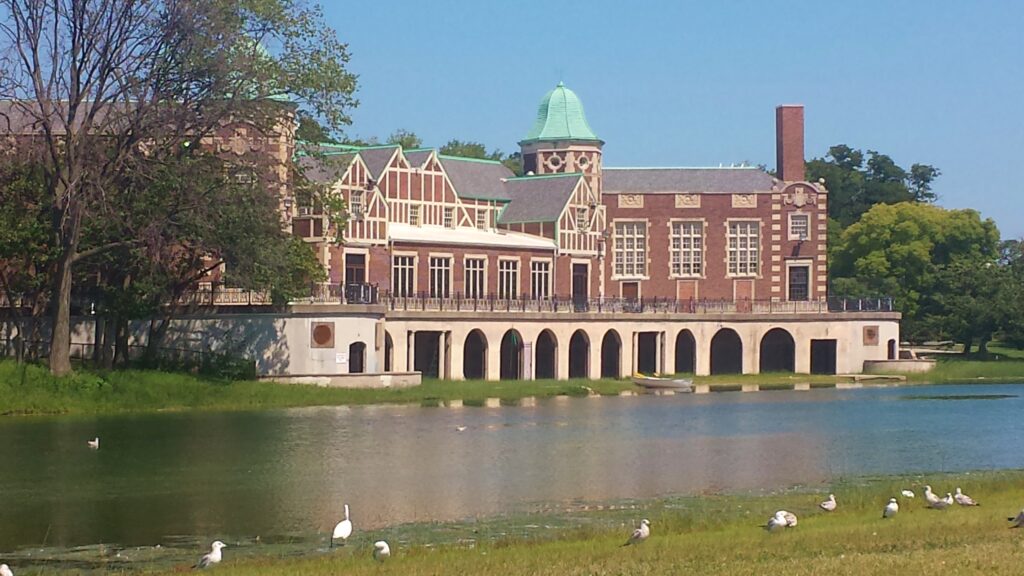Humboldt Park: A Vibrant Mosaic of Cultures
Nestled on the northwest side of Chicago, Humboldt Park is a vibrant neighborhood known for its rich cultural heritage and remarkable diversity. The neighborhood is an epicenter for Puerto Rican culture in the windy city and the Midwest at large, making it a significant cultural hub.
A Glimpse into Humboldt Park’s Rich History
Humboldt Park was named in 1869 in honor of Alexander von Humboldt, a renowned German naturalist and geographer. Despite never visiting Chicago during his American visit, his legacy lives on in the community that bears his name. The neighborhood was incorporated into Chicago in the same year, marking a significant milestone in its history.
The creation of the West Park System, which includes Humboldt Park, Douglass Park, and Garfield Park, was instrumental in the community’s development. These parks were established to provide a respite from the bustling city life, creating a tranquil oasis for Chicago’s residents. The onset of public transit in the 1880s further spurred the growth and development of this culturally diverse neighborhood.
Humboldt Park: A Melting Pot of Cultures
The early waves of immigration to Humboldt Park brought in a diverse mix of ethnicities, including Germans, Scandinavians, Poles, Ukrainians, Italians, and European Jews. The neighborhood’s cultural landscape shifted significantly between 1950-1965 as Puerto Ricans started to settle in the area in large numbers. Many of these immigrants were displaced from their previous neighborhoods due to gentrification, while others migrated directly from Puerto Rico. This demographic shift coincided with the exodus of the majority of the European population from the community.
Despite the struggles and systemic oppression faced by the Puerto Rican community, Humboldt Park emerged as a neighborhood committed to addressing social justice issues. It played a significant role in affirming the experiences of its residents and improving their living conditions.

Humboldt Park Today: A Hub for Activism and Culture
Today, the area is a vibrant neighborhood marked by ongoing activism and community engagement. It’s a neighborhood with a strong cultural identity, where various cultures blend harmoniously. The community continues to battle against issues like gentrification, which often leads to the displacement of lower-income residents and disrupts the cultural fabric of the neighborhood.
Despite these challenges, Humboldt Park is home to several groups and organizations dedicated to improving the living conditions for all residents. The neighborhood is also a hotbed for culture-affirming art, with stunning murals adorning several streets, showcasing the rich history and resilience of the community.
Humboldt Park: A Celebration of Puerto Rican Culture
Humboldt Park holds a special place in the hearts of Chicago’s Puerto Rican community. Each year, the neighborhood hosts a festival celebrating Puerto Rican culture, arts, and values. The Paseo Boricua, a stretch of Division Street adorned with two giant steel Puerto Rican flags, serves as a proud symbol of the community’s cultural heritage.
The neighborhood has also been the site of significant historical events for the Puerto Rican community. The 1966 Division Street riots, triggered by an altercation between police and parade-goers during Puerto Rican Week, highlighted the power struggle between the community and law enforcement. These events marked a turning point in the history of Humboldt Park, sparking a wave of activism and advocacy for Puerto Rican rights.
Humboldt Park: A Canvas of Cultural Art
The area is renowned for its captivating murals that narrate stories of struggle, survival, and equality. Many date back to the 1970s, serving as enduring symbols of the community’s resilience and cultural pride. The artwork tells tales of the community’s history, its people, and their experiences, making the neighborhood a living museum of public art.
Humboldt Park is more than just a neighborhood; it’s a vibrant tapestry of diverse cultures, a testament to the resilience of its people, and a beacon for social justice. As a cultural hub, it continues to preserve its rich heritage while fostering an atmosphere of inclusivity and community engagement. Despite the challenges it faces, Humboldt Park stands strong, a symbol of cultural preservation and community resilience in the heart of Chicago.
As a hub for activism and a canvas for cultural arts, the neighborhood is a place where the past and present coexist harmoniously, crafting a unique narrative that continues to evolve. In essence, Humboldt Park embodies the spirit of Chicago – a city of neighborhoods, each with its own distinctive character, each contributing to the vibrant cultural mosaic that makes the city truly unique.


